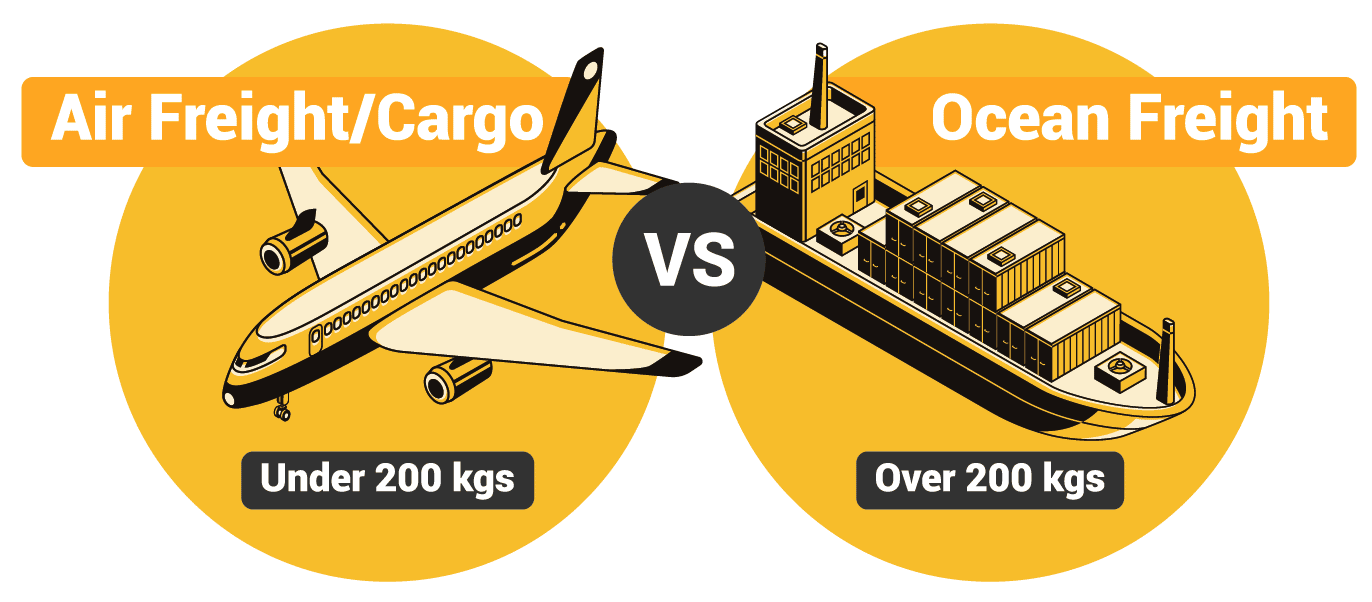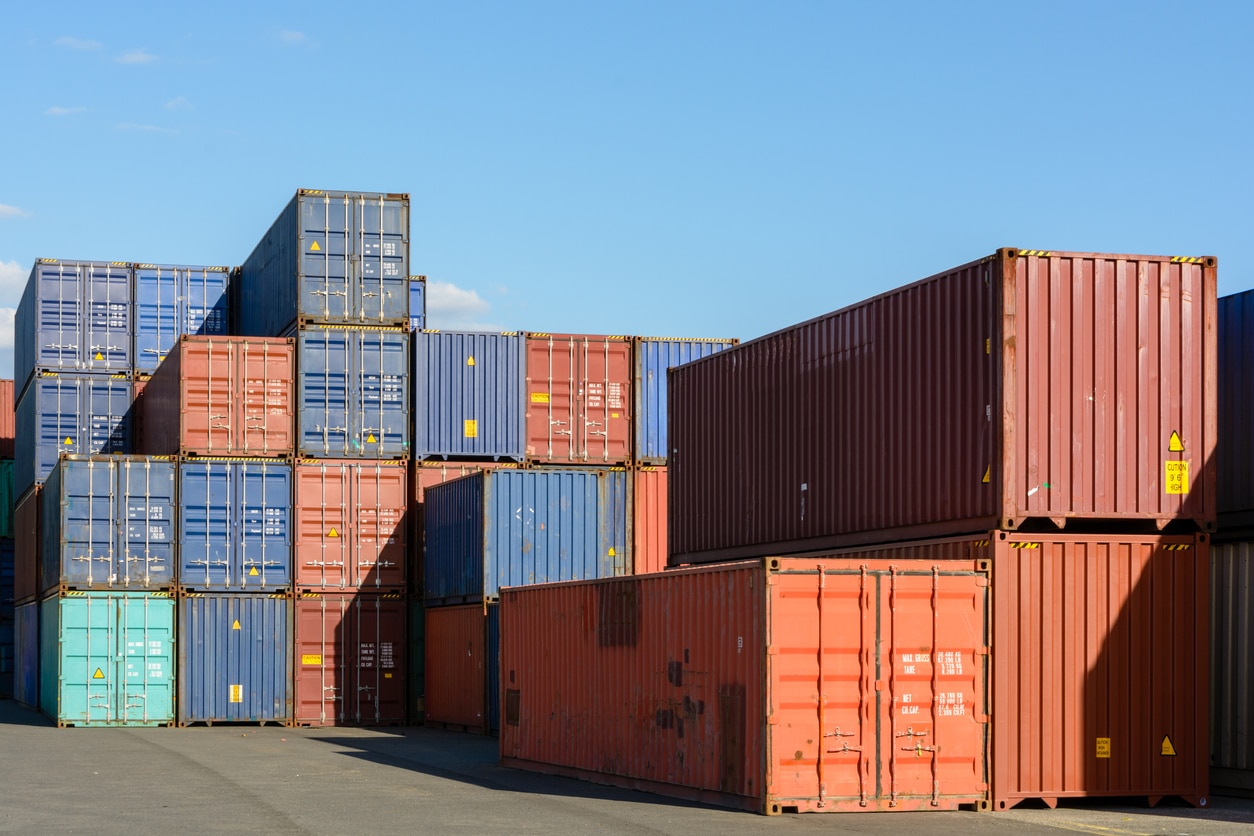International Ocean Sea Freight
Air Freight/Air Courier is Reasonable When Ordering Samples
The first thing to consider with Ocean Freight is whether you are actually better off shipping via air freight or air courier. There are some significant differences between air freight and air couriers
But the general rule of thumb is that for shipments under 200 kgs or so shipping via some air method as opposed to sea freight is almost always cheaper and far more convenient. Air shipping rates generally range from $5/kg-$10/kg but do not have the same high fixed costs common with ocean freight.
How Much Does Ocean Freight Cost?
For any shipment over 200 kgs or so, ocean freight is normally your cheapest option.
Ocean freight has high base costs but it scales very well. For example, your ultimate cost to ship a 20 kg box via ocean freight may be $300, but for 200 kg you will pay $310, for 2000 kg, $390, etc. For air freight, there is almost no scaling. A 20-kgs box will cost you $100 and a 40-lbs box will cost you $200.
Sea Freight comes into two varieties:
- Full Container Load (FCL, 20’ and 40’ containers) and
- Less than Container Load (LCL).
Further, containers come in three basic sizes: 20′, 40′, and 40'hq (40′ high cube).
LCL freight simply means you have one or more pallets put into a container along with other companies goods. Full containers mean you get the full container to yourself. Simple, right? Any freight forwarder can arrange for full container shipping or LCL for you.
When Should You Ship Full Containers (FCL) and Less than Containers (LCL)?
When should you use LCL ocean freight and when should you use FCL ocean freight? The obvious answer would appear to be that you should ship full containers when you have enough stuff to fill the container and LCL, otherwise. This isn't quite true.
From a financial perspective, a full container 75% or greater full is normally cheaper than shipping LCL (in other words, LCL has around a 25% pro-rated surcharge). However, there are two other important considerations as well. First, LCL has transit times around 1-2 weeks longer than FCL. That's because the freight forwarder has to pack your items and unpack your items with other people.
Second, LCL cargo is more prone to loss and damage (although it's very rare) because of this additional handling. If time and care are important for you, shipping even a half-empty container can sometimes make sense.
Ocean Freight Has High Fixed Costs and Many Surcharges
With Ocean freight, there are a lot of surprise fees when the shipment comes to your country. When you receive an invoice from your freight forwarder you may be shocked at how many fees exist outside of the actual ocean freight. Below are some sample fees you can be expected to pay:
- Dock Fees: $50-100
- Freight Forwarder Administration Fee: $75-200
- Security Fee: $50-100 (normally on Full Container Loads)
- Customs Clearance Fee: $100-200 (plus applicable duties/taxes)
- Final Truck Transportation from the bonded warehouse to your doorstep: $200+ (unless you pick up your shipment yourself)
The last two fees, Customs Clearance Fee and Final Truck Transportation, you can technic and do yourself. In reality, no one ever does this themselves.
Ocean Freight is Very Different From What You Are Used To (Sort Of)
Most of us are accustomed to shipping things via USPS, FedEx, etc. and other small parcel carriers. Ocean freight at first seems very different from these types of services, but when you think about it more deeply, you'll realize they are actually very similar.
If you are shipping something via USPS, you know that you have to drop the item off at a post office. With Ocean Freight it's the same way: someone has to drop it off at the post office! Except, in this case, the port is the post office.
If you imagine the United States for a second, you know that Kansas is very far from the ocean. So to ship a few pallets to, for example, the Port of New York, you somehow need to have the goods shipped up to New York. The same thing is true if you order something from your supplier in Chengdu (central China) to the Port of Shanghai.
Thankfully, you don't actually have to arrange with some random Chinese truck driver to pick up your goods. Most freight forwarders are happy to arrange to pick up your goods from your Supplier's factory. But it will cost more money. That is why things called Incoterms are very important.
For example, if you and your supplier agree to the shipping terms FOB Shanghai, this means your supplier will pay for the cost of having your goods shipped to the Port of Shanghai.
If you agree on EXW Chengdu, you will pay for it (see my warning on EXW here). Shipping goods hundreds or thousands of miles via truck isn't cheap, no matter what country you are in, so always be aware of this!
Once your goods are shipped to the port, they get put in a container, and the next time you hear of them should be when they arrive in your home country.
Ocean Freight (and Air Freight) Require the Use of a Freight Forwarder
So how do you actually book sea freight? You need something called a freight forwarder (the same goes for air freight as well in fact). A freight forwarder is essentially a broker who buys space on ocean liners for containers. You cannot book this space directly on ships yourself – you need the freight forwarder.
Freight forwarding is HIGHLY competitive and there are thousands upon thousands of freight forwarders. There are now two very popular brokers for freight forwarders (in essence, they're brokers of brokers) called FlexPort and Freightos. You can get a quote for nearly any shipment.
Pros and Cons of Ocean Sea Freight
Pros of Shipping with Ocean Sea Freight
- Cost-effective
- Capacity
- Flexibility
- Security
- Environmentally more friendly than air cargo
Cons of Shipping with Ocean Sea Freight
- Longer transit waits
- Dependence of weather or sea conditions
- Custom clearance
- Limited accessibility


Comments
Post a Comment